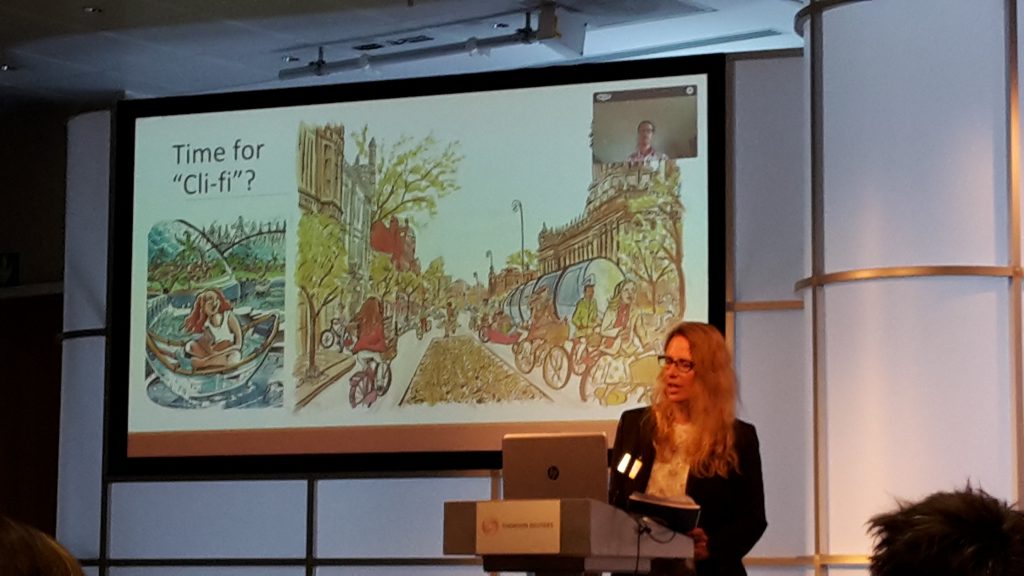
A copy of this post has been published by the Thomson Reuters Foundation and can be read here.
Tuesday 5th September 2017
Yesterday I attended the inaugural climate visuals masterclass, run by Climate Outreach and hosted by the Thomson Reuters Foundation.
Over the past few months, I have looked at various methods of climate change communication for my dissertation and had an interest in finding out more about the photographs and images that are used to portray climate change to the wider public.
I learnt that if you google ‘climate change’, many of the pictures that come up are variations of a small set of images. Also images containing people aren’t used as often as you’d expect, the bulk are made up of extreme weather events and the ‘posterchild of global warming’ – the polar bear. The problem communicators have, is that the polar bear is the most recognised and well understood image in regards to climate change.
Whilst there is an appetite for new visual stories about climate change, familiar images such as the polar bear have a clear advantage for a consumer’s rapid understanding. Interestingly, we are also better able to empathise when we see an individual, as opposed to a crowd in an image.
As with all forms of climate change communication, people respond better to things they can resonate with. In this sense, local images are good to use for your target audience. Would an image of a drought in China make someone in an urban area of the UK want to take action on climate change? Maybe, but probably not. Instead images of cities in the UK being flooded are likely to be more relevant.
One thing that really surprised me is that people can be turned off by seeing images of protestors and marches. One reason for this is because they sometimes doubt the credibility of the people in the pictures. However, when the person appears credible, this cynicism disappears.
On a seperate note – I’ve been shocked by how the media sometimes has rolling coverage of a climate related disaster (such as Hurricane Harvey in Texas), and yet only makes very brief reference to climate change. I think certain media outlets such as CNN, BBC News and Sky News (as well as most UK tabloids), need to rectify this issue.
The seven main principles for visual climate change communication are summed up as follows:
1) Show real people, and avoid staged photo opportunities.
2) Tell new stories.
3) Show climate causes at scale.
4) To engage people’s emotions, show the impacts of climate change (i.e. extreme weather events).
5) Show local impacts.
6) Be very selective with images of protestors/marchers.
7) Make sure you understand the audience who you are using the images for.
At the start of the day, it was noted how little reference in the masterclass there was to the role that artists play in communicating climate change. As someone who has spent the past year completing an MA in Creative Writing, in order to gain the skills I need to write novels about climate change (cli-fi novels), this was something that I had also picked up on! So you can imagine my excitement when Laurie Goering, who is the Head of Climate Programme at the Thomson Reuters Foundation, gave a talk and mentioned the role cli-fi could play as a form of communication!
This was by far and away the highlight of the day for me, and gave me a sense of validation. I believe cli-fi has a crucial role to play in educating people about the impacts of climate change and the solutions that are available to us right now.
If you visit the World Press Photo awards, then look out for a category on climate change images next year, which has been set-up in conjunction with Climate Outreach.
My new cli-fi children’s picture book is Nanook and the Melting Arctic. Nanook is a caring polar bear who lives in the Arctic. But when his igloo starts melting, Nanook must find a way to save his friends and his home. He knows that the people who can help are also those who’ve caused the problem and he must find a way to convince leaders to act on the climate crisis. You can purchase Nanook from Amazon’s global stores including Amazon UK and Amazon US.